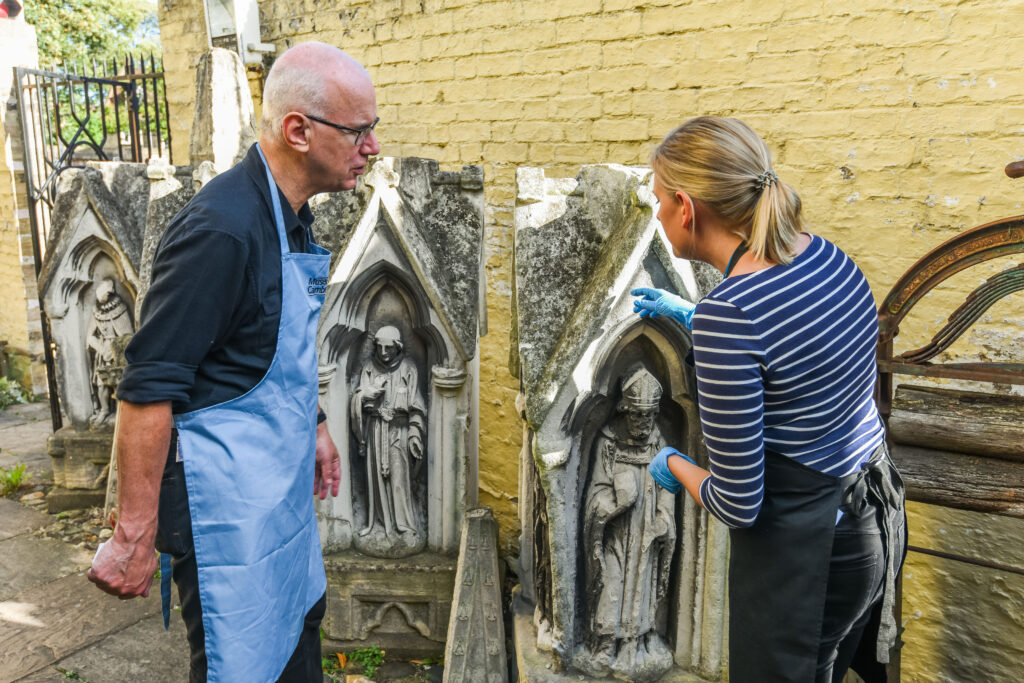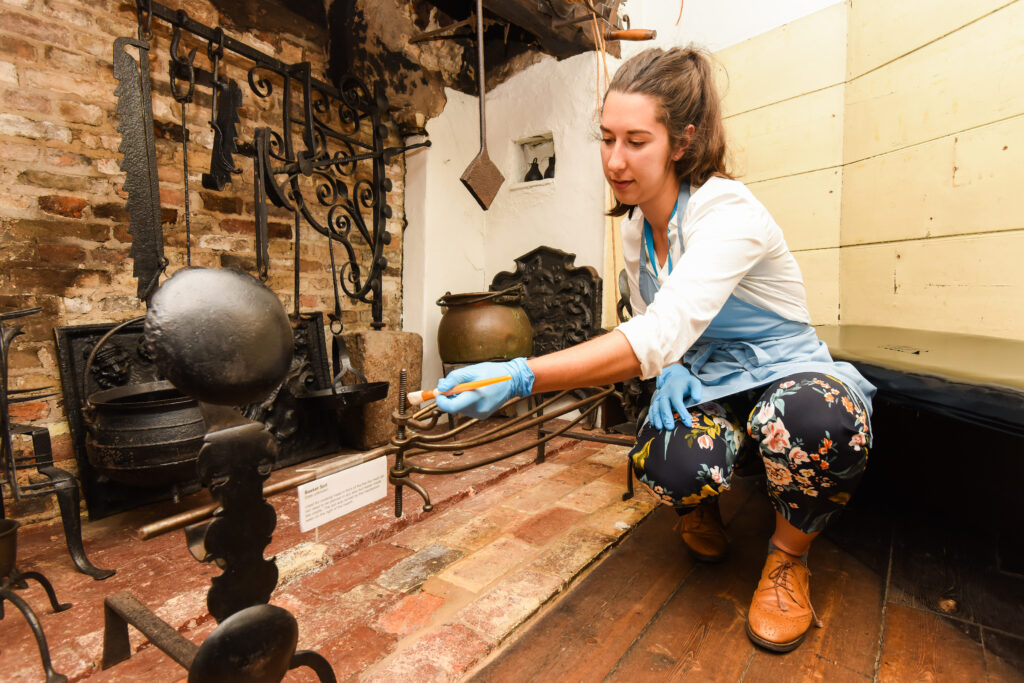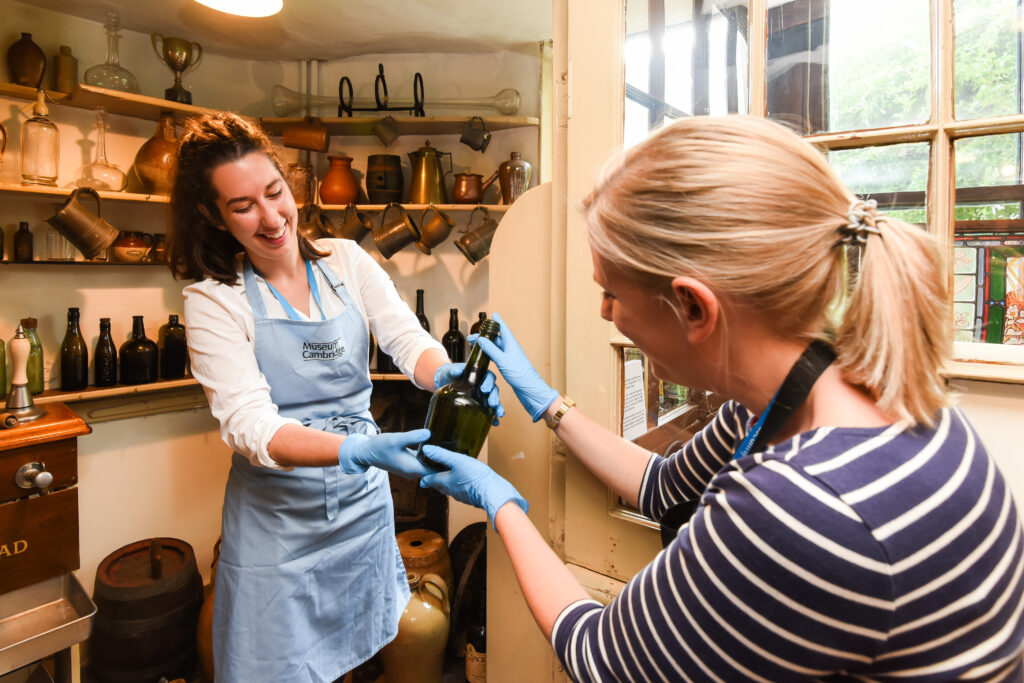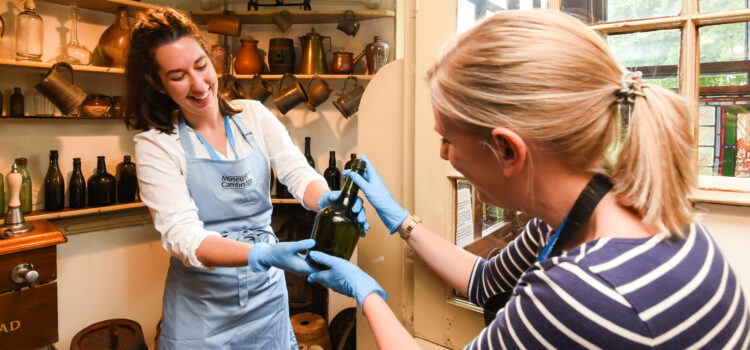What does preventative conservation look like?
In a museum like ours, looking after our collection and our building is everyone’s job. The Museum of Cambridge holds more than 25,000 items donated to it over the last 85 years from people across Cambridgeshire and we are caretakers of the 400 year old White Horse Inn. Everything that we do is about looking after and sharing the stories of our objects.
As a museum we take great care of all our objects, whether they were well used household items, or beloved family treasures. Caring for collections is no small task! Each object needs to be looked after and protected from a variety of dangers which would seek to dull its shine over time.
It’s a rare opportunity that we can completely restore or conserve an object back to its original state. Instead, we work to prevent as much additional damage or aging to an object as we can with preventative conservation. Prevention covers a wide range of action, from reducing exposure to light to preventing fire and water damage. Looking after these “agents of deterioration” as they’re known, can extend the life, colour, quality and sometimes function of an object for many, many years to come!
Here are a few of the top agents of deterioration that we guard against in museums and how you can look after your own treasures at home as well!
- Dust This may seem like something to overlook, but dust can be a major risk to objects if they aren’t cleaned with care. Over time dust can start to build on the surface of objects, if left long enough and depending the surface it lands on it can form a sticky hard layer or get embedded in cracks on the surface and damage the object. Dust can also attract pests which can eat way at historic objects!
- Pests can cause big problems to museum collections as well, moths, carpet beetles, and woodworm can eat their way through precious items of clothing, textile or wood. The best prevention against pests is to keep a space clean! Regular dusting, vacuuming and removing anything they like to snack on keeps collections safe. This is one of the reasons most museums ask you not to bring food into exhibits!
- Light is one of the things that can creep up on an object over time, and accumulate damage. Light exposure is measured in LUX which is the amount of light which falls in a square meter. Objects like textiles, paper or water colours can handle less light exposure and need to have their LUX hours reduced. This is done by reducing the amount of UV light and strength of light that falls on an object.
- Humidity doesn’t just cause our hair to get frizzy, but it can also impact collections items. The happiest collection item will live in a stable environment at a consistent relative humidity, where the saturation of water in the air stays the same. High humidity can cause an object, to swell, which can lead to cracking or tears in material, and also create an environment where mould can thrive. Equally, too low humidity can dry out objects, and lead to cracking and damage. Though it seems like a lose-lose situation the “Goldilocks Zone” for humidity is between 40%-60%. We monitor the relative humidity in our store, galleries and offices to keep an eye on our environments and correct them if we can.
- Loss; though it may see strange to think its possible to lose an item in a museum, it is a big risk that objects or information about objects goes missing. This is why one very important job is to keep our records up to date. This includes object numbers so we know which object is which, and the locations of objects both in storage and on display.
With all of these (and several more) agents of deterioration in mind, the Museum of Cambridge is looking after its objects now and for future generations to enjoy!
Fancy being part of our team and helping us keep our objects safe? We will imminently be holding and volunteering open day to learn about our upcoming volunteering opportunities. Register your interest at volunteer@museumofcambridge.org.uk



